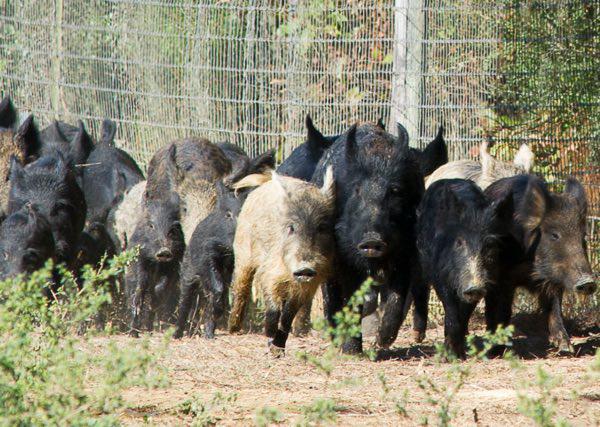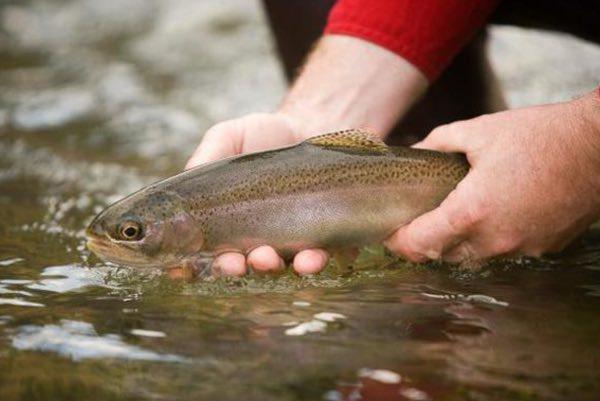Sports
MDC Collected 15,872 Samples This Past Weekend
November 16th 2017 by Dee Loflin

MDC thanks hunters for help with CWD sampling
MDC collected 15,872 samples this past weekend, offers CWD testing through rest of season.
Missouri - The Missouri Department of Conservation (MDC) thanks the more than 10,000 deer hunters who participated in the Department’s mandatory CWD sampling efforts last weekend in 25 counties. Thanks to hunter participation, MDC collected 15,872 tissue samples last weekend from harvested deer for CWD testing.
MDC has also collected about 750 tissue samples for CWD testing over the past several months from harvested and road-killed deer with no new cases of CWD found so far this season.
MDC sends test samples to an independent laboratory for testing and will report test results as they become available. Stay up to date on test results received by MDC at mdc.mo.gov/cwd under CWD in Missouri.
According to the Centers for Disease Control and Prevention (CDC), there have been no documented cases of CWD in humans, but it is important to prevent human exposure to CWD. As a safeguard, the CDC recommends hunters strongly consider having their harvested deer tested for CWD before eating the meat if the animal was harvested from an area where CWD has been found. The CDC also recommends not consuming an animal that tests positive for the disease. Learn more at mdc.mo.gov/cwd under Human Health Risks from CWD.
Last Updated on November 16th 2017 by Dee Loflin
https://showmetimes.com/Blogpost/v93j/MDC-Collected-15872-Samples-This-Past-Weekend
MDC Reports Firearms Deer Season Opening Weekend harvest Totals 94,000+
November 14th 2017 by Dee Loflin

MDC reports firearms deer season opening weekend harvest totals 94,000+
Top harvest counties for opening weekend were Howell, Franklin, and Texas.
Missouri - Preliminary data from the Missouri Department of Conservation (MDC) shows that deer hunters in Missouri harvested 94,977 deer during the opening weekend of the November portion of the fall firearms deer season Nov. 11 and 12. Of the 94,977 deer harvested, 54,027 were antlered bucks, 9,535 were button bucks, and 31,415 were does.
Top harvest counties for opening weekend were Howell with 2,095 deer checked, Franklin with 2,060 and Texas with 1,855.
Last year hunters checked 96,131 deer during the opening weekend of the 2016 November portion of firearms deer season.
The November portion of fall firearms deer seasons continues through Nov. 21. Archery deer season opens again Nov. 22 through Jan. 15, 2016. The late youth portion of firearms deer season runs Nov. 24-26. The antlerless portion of firearms deer season runs Dec. 1-3 and the alternative methods portion will run Dec. 23- Jan. 2, 2018.
Missouri offers some of the best deer hunting in the country and deer hunting is an important part of many Missourians’ lives and family traditions. Deer hunting is also an important economic driver in Missouri and gives a $1 billion annual boost to the state and local economies.
Last Updated on November 14th 2017 by Dee Loflin
https://showmetimes.com/Blogpost/v92s/MDC-Reports-Firearms-Deer-Season-Opening-Weekend-harvest-Totals-94000
MDC Advises Proper Fencing Can Help Keep Out Feral Hogs
October 26th 2017 by Dee Loflin

By Lauren Hildreth, MDC Wildlife Programs Supervisor
Jefferson City, Missouri - The Missouri Department of Conservation (MDC) is working with public and private conservation partners through the Missouri Feral Hog Partnership to eliminate feral hogs from Missouri. Agencies in the partnership are helping landowners remove hogs from their properties through trapping, and some landowners are attempting to prevent their return through fencing.
Feral hogs are highly destructive and prolific pests that eat nearly anything, including many species of native wildlife. They also compete with native wildlife by eating acorns, a major fall food source for deer, turkey, and black bear. Their rooting and wallowing destroy landscapes and pollute ponds, streams, and other waters. Damage caused by hogs has been estimated at nearly $1.5 billion per year in the United States.
MDC and other state and federal agencies are helping landowners with feral hog removal from private properties. Once the hogs are removed, some landowners are using fencing to discourage their return. However, landowners should be aware of potential impacts different fencing types may have on wildlife.
Linda Tanner, a landowner in Reynolds County, took a proactive approach to keeping feral hogs off her land. She and her family trapped 39 hogs on their property and then decided to replace their field fencing with cattle panels to discourage hogs from returning.
“We thought we were being smart to choose cattle panels, as they are taller, sturdier, and longer lasting than our field fencing,” Tanner said.
However, Tanner and her family soon noticed there were dents at the top of the panels, presumably from deer jumping over the fence. They then observed a deer on their property with a leg injury, which confirmed their suspicions. Tanner said she wanted to share her story with MDC in an effort to warn others of the damage improper fencing may cause wildlife.
Mark McLain, MDC’s feral hog elimination team leader, has a few pointers for fencing to help keep out feral hogs.
“Fencing is not a silver bullet,” McLain said. “Hogs can get over, under, or tear through many types of fencing.”
For landowners who want to try fencing as a possible deterrent to feral hogs, McLain recommends electric fencing with three-to-four-strand electric wire set very hot (at least 16 joules).
Another option is woven wire fencing with barbed wire on the bottom to discourage rooting.
“Well maintained fences can sometimes keep hogs out of a crop field or pasture for a short time, but are not a perfect tool to exclude them from your property,” McLain cautioned. “A combination of trapping hogs and fencing sensitive areas works better than just fencing alone.”
McLain said other tools in eliminating feral hogs are landowner-reported sightings and trapping of whole groups of hogs, called sounders. He also asks that people report the release of feral hogs to MDC. Releasing feral hogs is illegal in Missouri.
Last Updated on October 26th 2017 by Dee Loflin
https://showmetimes.com/Blogpost/v8u8/MDC-Advises-Proper-Fencing-Can-Help-Keep-Out-Feral-Hogs
MDC Encourages Deer Hunters to Share the Harvest
October 24th 2017 by Dee Loflin

MDC and CFM encourage deer hunters to Share the Harvest
Help feed hungry Missourians through this annual statewide effort.
Jefferson City, Missouri - The Missouri Department of Conservation (MDC) and the Conservation Federation of Missouri (CFM) encourage deer hunters around the state to share their harvests through the state’s Share the Harvest program. Administered by MDC and CFM, Share the Harvest coordinates the efforts of thousands of deer hunters, numerous participating meat processors, many local supporting organizations, and a handful of statewide sponsors to help feed hungry Missourians.
The program works by deer hunters donating their extra venison -- from several pounds to whole deer -- to participating meat processors throughout the state who grind and package the deer meat. The packaged venison is then given to food banks and food pantries for distribution to Missourians in need of food assistance.
“Hunters started Share the Harvest because they saw a need in their communities,” said MDC Director Sara Pauley. “And hunters remain the driving force behind this popular program that helps feed our fellow Missourians who are in need. We sincerely thank the thousands of deer hunters who support Share the Harvest, along with the many participating meat processors and sponsors.”
Processing fees are covered entirely or in part by numerous local sponsors, along with statewide sponsors that include: MDC, CFM, Shelter Insurance, Bass Pro Shops, Missouri Chapter Safari Club International, Missouri Chapter National Wild Turkey Federation, Midway USA Inc., Missouri Food Banks Association, and United Bowhunters of Missouri
Hunters should contact individual processors to determine what funds are available. The cost of processing is the hunter’s responsibility when funds to help cover the full cost of processing are not available.
“Share the Harvest is a partnership of citizens, agencies, organizations, and corporations working together to provide healthy, protein-rich meat to those who may otherwise go without,” said CFM Executive Director Brandon Butler. “Hunters across Missouri should be proud of this outstanding program.”
Nearly 4,300 Missouri deer hunters donated more than 198,000 pounds of venison to the program last deer season. Since the program was started in 1992, Share the Harvest has provided more than 3.6 million pounds of lean, healthy venison to help feed hungry Missourians.
Last Updated on October 24th 2017 by Dee Loflin
https://showmetimes.com/Blogpost/v8t8/MDC-Encourages-Deer-Hunters-to-Share-the-Harvest
MDC Stocks Trout in Southeast Missouri Lakes
October 23rd 2017 by Dee Loflin

Cape Girardeau, Missouri - The Missouri Department of Conservation (MDC) is continuing the annual winter trout program in southeast Missouri, stocking rainbow trout in Perryville’s Legion Lake, Jackson’s Rotary Lake and Farmington’s Giessing Lake.
Legion Lake will receive 3,760 rainbow trout, Rotary Lake will receive 1,900 and another 1,200 will be stocked in Giessing Lake. In addition, each lake will receive a number of ‘lunkers’. The cities of Jackson, Farmington, Perryville, as well as Perry County, the Perry County Sportsmen’s Club and the Missouri Department of Conservation, purchased the trout to be stocked.
The annual winter trout fishing program begins Nov. 1, marking the opening of Missouri’s winter trout season in lakes around the state. Anglers can fish for this popular cold-water fish through the fall and winter months on a catch-and-release basis. Anglers may harvest trout as of Feb. 1, 2018. Rainbow trout are cold-water fish which live in water temperatures less than 70 degrees. They do well in local impoundments during the colder months.
Paul Cieslewicz, MDC fisheries management biologist, cautions anglers to remember that from Nov. 1 through Jan. 31, all trout must be released unharmed immediately.
“During this time, anglers may only fish with flies, artificial lures, and unscented plastic baits,” Cieslewicz said. “In addition, they may only use one fishing rod at a time and chum is not permitted.”
Starting Feb. 1, any bait may be used and four trout may be kept regardless of size. All anglers between the ages of 16 and 64 must have a valid Missouri fishing permit and any angler harvesting trout must possess a trout permit as well.
Mike Reed, MDC fisheries management biologist, said trout can be caught on a wide variety of lures.
“Flies, which imitate aquatic insects, are popular with fly fishers,” he said, “but spinners, small spoons, and other small lures are good choices.”
Light line and tackle will typically produce more fish than heavier tackle. Successful anglers typically use two to six pound test line when fishing with lures and add little or no additional weight to the line.
“Set the drag light as a trout often hits hard and makes strong runs which can break weak or frayed line,” Reed said.
For more information about trout stocking in southeast Missouri, contact MDC’s Southeast Regional Office in Cape Girardeau at (573) 290-5730. For more information about fishing in Missouri, go online to mdc.mo.gov/fish.
Last Updated on October 23rd 2017 by Dee Loflin
https://showmetimes.com/Blogpost/v8rv/MDC-Stocks-Trout-in-Southeast-Missouri-Lakes

